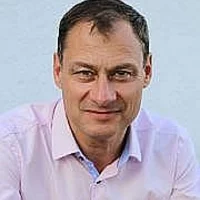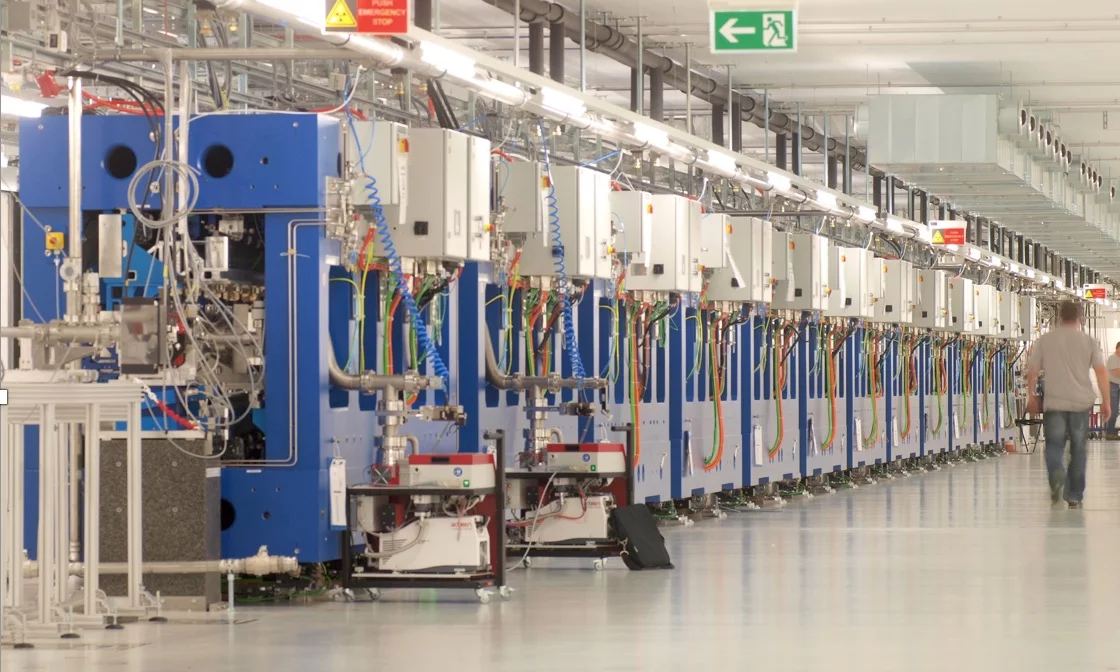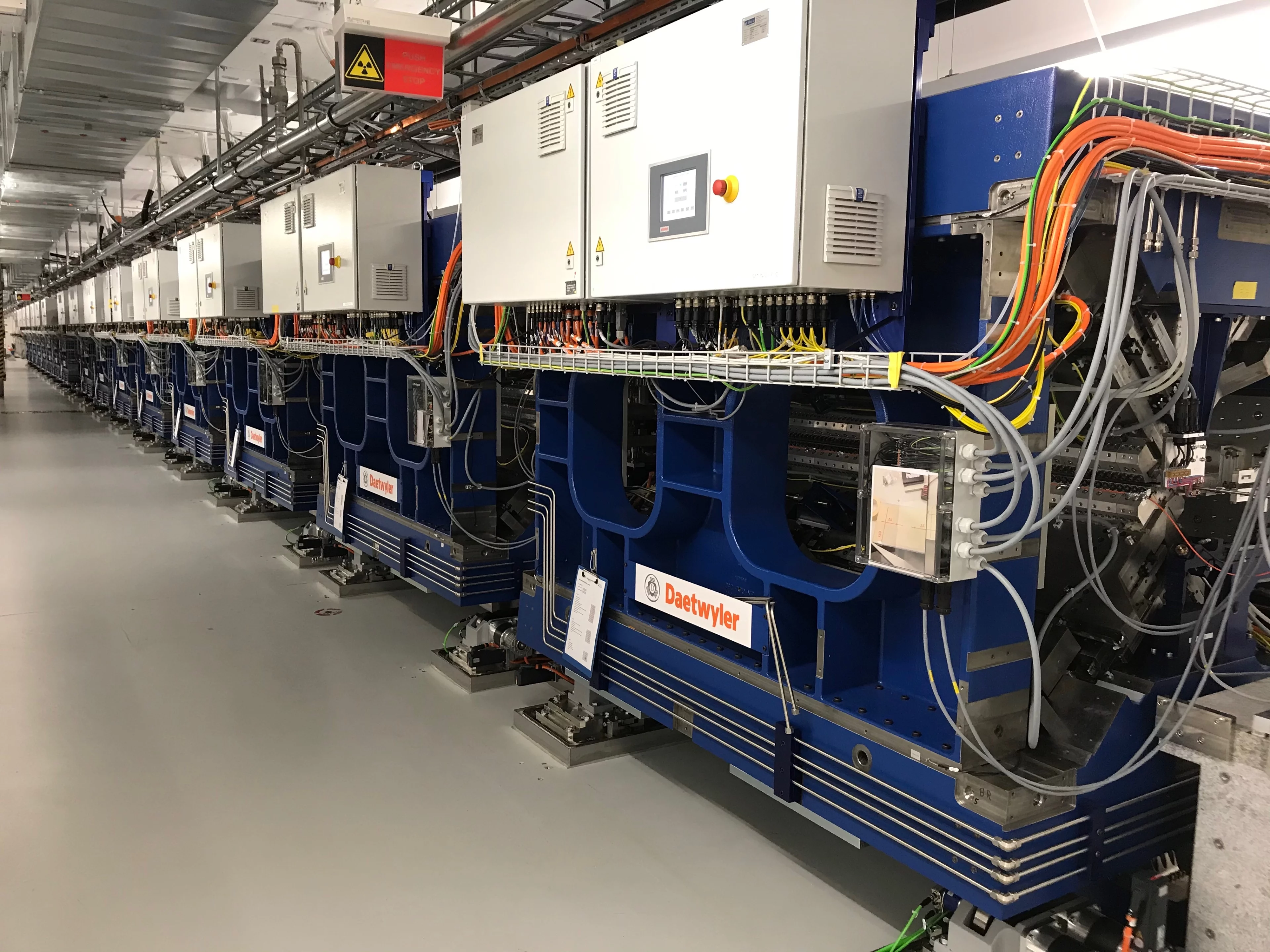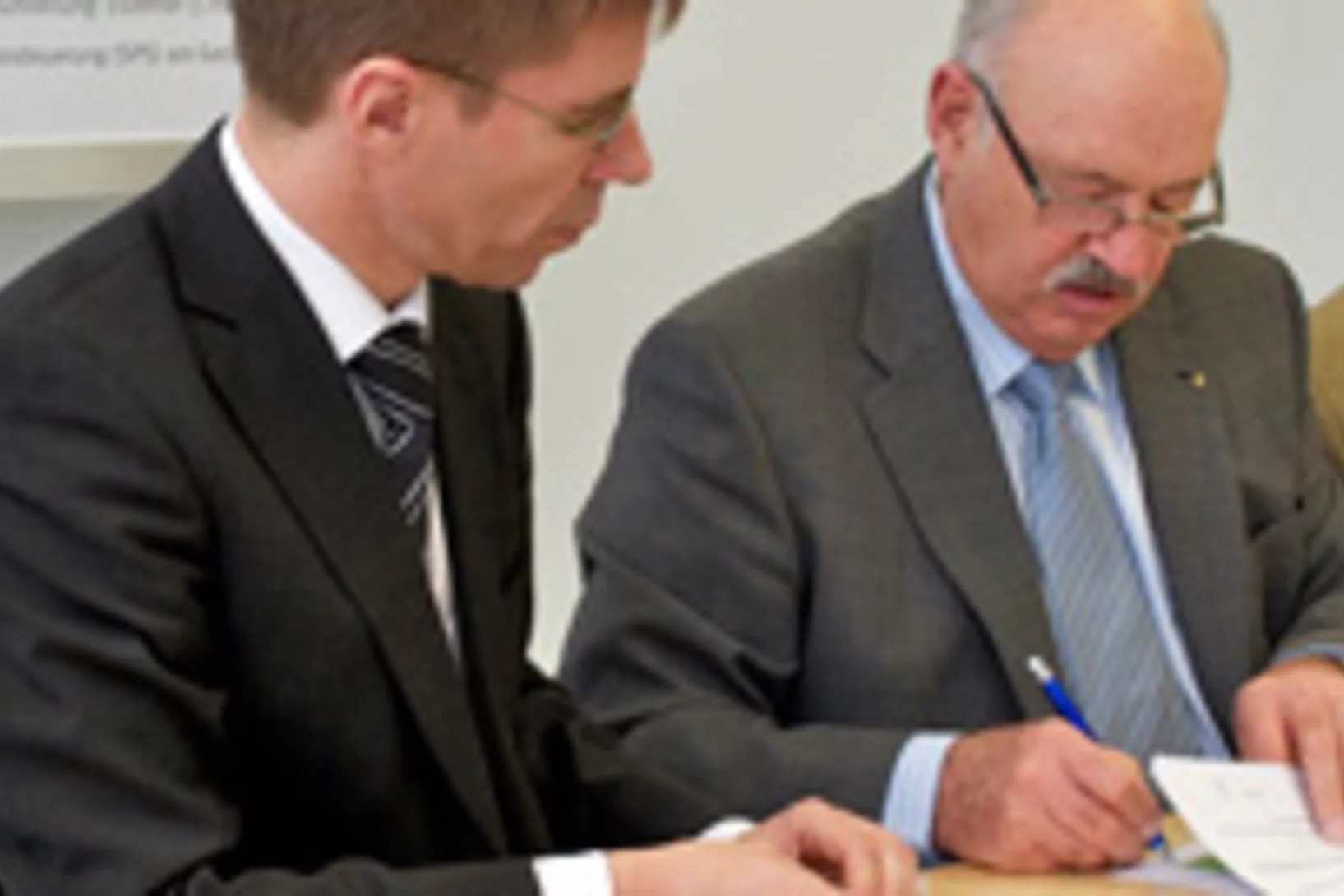We design, build and run undulators for SLS/SLS2.0 and SwissFEL and support the beamlines
The SLS was the first medium energy 3rd generation synchrotron light source which covered both soft and hard x-ray beamlines in one machine. For the hard x-ray short-period, small gap in-vacuum undulators with 19mm periods and minimum gaps of 4mm are operated at high harmonics up to photon energies of 20keV. The only wiggler which was installed in 2001 could be replaced in 2010 by a cryogenic in-vacuum undulator with only 14mm period to achieve even higher photon energies up to 35keV. For the soft x-ray beamlines all undulators provide variable polarization with different types of APPLE II undulators with variable and fixed gaps, and, to reach lowest photon energies of 10eV, one quasi-periodic electromagnetic undulator.
For the first SwissFEL beamline named ARAMIS, an undulator with about 60m total length has been designed at PSI and built together with a local industry partner. The in-vacuum undulator consists of 13 modules of 4m length each. With a periodlength of 15mm there are 265 periods per module, in total 3500 periods. The gap range in operation varies only between 3mm and 6mm which gives a tuning range from K = 1.8 to 1.0. The gap change is realized with a most direct wedge-based system which allows sub-μm precision. The wedges transport the stiffness of the closed support structure out of cast mineral to the beam axis. A keeper design based on flexors allows precise and for the first time an automated correction of the remaining field errors.
The second SwissFEL beamline named Athos is for soft x-rays which requires light with variable polarization. A new concept for APPLE undulators, the APPLE-X, has been developed at PSI which allows now full control of fields and gradients in a full symmetric way. For highest flexibility all 16 undulator modules with 2m length and 38mm period are of this APPLE-X type. This new concept allows several modes of operation which will make the ATHOS line worldwide unique.
The APPLE-X concept is used also in the EUXFEL soft x-ray undulator line SASE3 for which 4 undulators have been delivered, including the special automated measurement/optimizaton system. In an alternative way at EUXFEL the polarisation is controlled by so called afterburner undulators while the FEL process, the density modulation of the electrons is generated in 33 planar undulators upstream the APPLE-X. The linear polarised light out of the planar undulators is effectively suppressed by the reverse tapering technique proposed by DESY. A second project, the soft x-ray FEL at MAXLAB in Lund plans to copy the Athos concept but with a compact version of the APPLE-X.
For the SLS2.0 update finally nearly all undulators will be renewed. The hard x-ray undulators can be longer by 50% provide shorter periods and higher K-values so that in combination with and the reduced emittance increased electron energy increase the brilliance of the emitted light is increased the more the higher photon energy is. For the i-Tomcat beamline the aim is to exceed 60keV. For this an R&D project supported by CHART and LEAPS is under way which uses high temperature superdconductors in a staggered array configuration driven by an external sc coil with 12T field. Short test undulator setups with 10mm period reached 1.95T field at a gap of 4mm, 2 times more than what could be achieved with the state of the art cryogenic permanent magnet undulators, the best performing technology for short periods so far.
But also soft x-ray beamlines will profit from new undulators. The (close to) on-axis injection schemes for SLS2.0 allow the use of round vacuum chambers which allows the use of the APPLE-X undulators effectively also in storage rings. However, the higher emitted power due to the higher photon energy and also here shorter periods with higher K-values would cause a smear out of the nice small beam dimensions. To reduce the on-axis power, the Knot concept has been adapted which has the capability to push the higher harmonics contamination to larger angles so that they can be catch already in the front-end.
The ID team worked successful in a team with experts from PSD, AIK and GFA and in close collaboration with our main industrial partner DAETWYLER AG, which started already in the design phase. The permanent magnets for the Athos undulator have been realised in close collaboration also with a local partner, Arnold magnetics which is located in Lupfig AG.
Scientific Highlights and News
Schweizer Hochpräzision stabilisiert den SwissFEL
Das Paul Scherrer Institut PSI und die MDC Max Daetwyler AG (Bleienbach), haben heute einen Vertrag unterzeichnet, nach dem Daetwyler wesentliche Komponenten für den Röntgenlaser SwissFEL, die neue Grossforschungsanlage des PSI, gemeinsam mit dem PSI entwickeln und bauen wird. Die Massnahmen des Bundes zur Abfederung der Frankenstärke erlauben es, den Bau der Komponenten vorzuziehen und so das SwissFEL-Projekt schneller voranzutreiben.
Contact
Dr. Jörg Raabe a.i.
Paul Scherrer Institute PSI
+41 56 310 51 93
jörg.raabe@psi.ch




